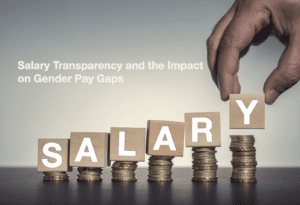Salary Transparency and the Impact on Gender Pay Gaps
In the realm of recruitment and compensation, salary transparency has emerged as a contentious issue. While some advocate for its benefits in promoting fairness and attracting top talent, others raise concerns about its potential to perpetuate pay disparities. A recent study by XpertHR sheds light on the current state of salary transparency in the UK, revealing that only 50% of firms include salary details on all of their job ads. This statistic highlights the reluctance of many employers to disclose compensation information, a practice that has reignited the debate about the benefits and drawbacks of pay transparency.
Salary Transparency: Unveiling Pay Data or Maintaining Secrecy?
Proponents of salary transparency argue that openly disclosing compensation information levels the playing field for job seekers and ensures that they are aware of the financial rewards associated with potential roles. This transparency, they contend, can reduce gender pay gaps by eliminating the opportunity for employers to lowball female candidates. Additionally, salary transparency can enhance a company’s employer value proposition by demonstrating its commitment to fairness and equity.
However, opponents of salary transparency express concerns that revealing compensation information can lead to a “race to the bottom,” where employers lower salaries in response to competitor disclosures. They also argue that salary transparency can diminish the bargaining power of employees, as employers may become less willing to negotiate salaries when a range is publicly available.
Gender Pay Gap: A Persistent Challenge
The debate over salary transparency takes on heightened significance in light of the persistent gender pay gap. The XpertHR study found that companies that include salary information on all their ads report a 9% gender pay gap, whereas those without transparency in their job adverts have a pay gap of 19%. This suggests that salary transparency may play a role in reducing gender-based pay disparities.
This link between salary transparency and gender pay gaps is further supported by the study’s findings regarding the proportion of females in top-paying roles. Organisations that disclose salary in all job adverts have a higher proportion of females in top-paying roles, with a median of 65%. This percentage drops to 33% in organisations with partial pay disclosure and 24% in those without any salary information in their adverts.
Conclusion: Striking a Balance
The question of whether to disclose salary information or keep it hidden from competitors remains a complex one. While salary transparency has the potential to promote fairness, attract top talent, and reduce gender pay gaps, it also raises concerns about its impact on employer bargaining power and potential perpetuation of pay disparities.
Ultimately, the decision of whether or not to disclose salary information may depend on the specific circumstances of each organisation. Companies should carefully weigh the potential benefits and drawbacks of salary transparency before making a decision. At the same time, policymakers should continue to explore ways to promote gender pay equity, whether through salary transparency or other methods.


